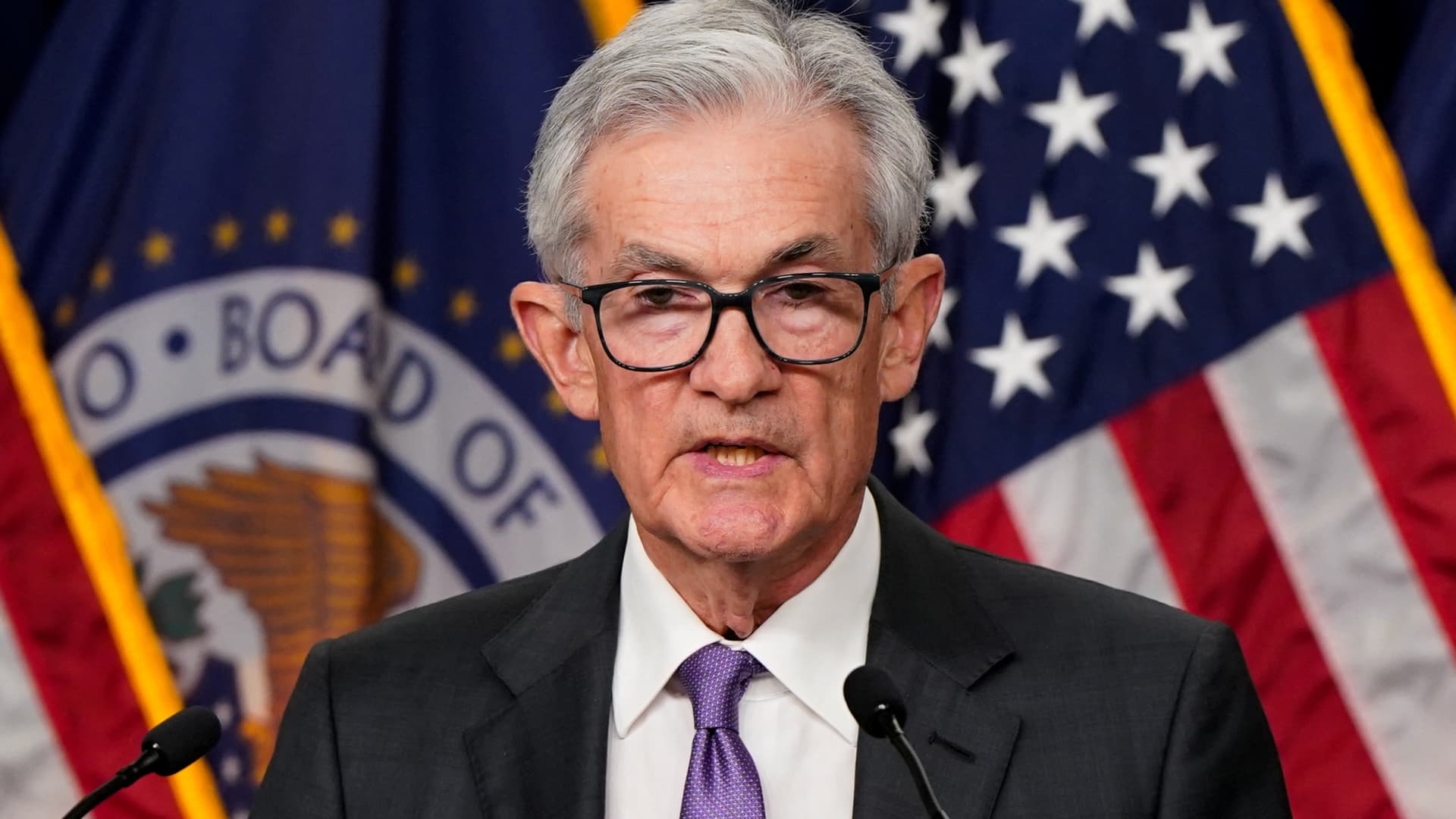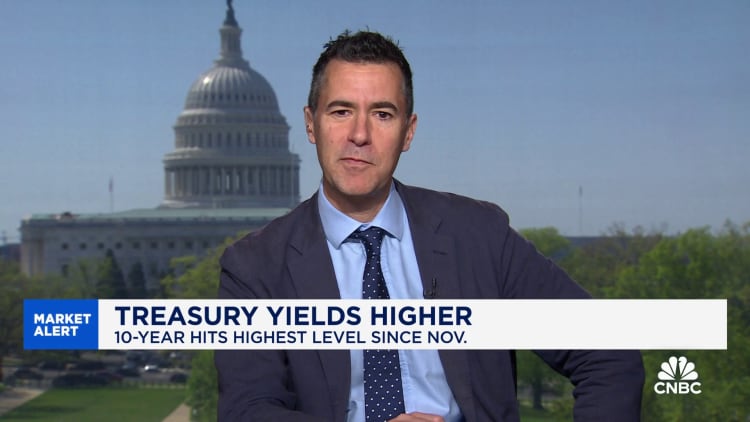
U.S. Federal Reserve Chair Jerome Powell holds a press conference following a two-day meeting of the Federal Open Market Committee on interest rate policy in Washington, U.S., March 20, 2024.
Elizabeth Frantz | Reuters
The U.S. economy could be headed for stormy waters in 2025 if the Federal Reserve does not take action soon on interest rates, State Street’s head of investment strategy in EMEA said Tuesday.
Altaf Kassam told CNBC that classic monetary policy mechanisms had “broken,” meaning that any changes made by the Fed will now take longer to trickle down into the real economy — potentially delaying any major shocks.
“The traditional transmission policy mechanism has broken, or doesn’t work as well,” Kassam told “Squawk Box Europe.”
The research chief attributed that shift to two things. Firstly, U.S. consumers, whose largest liability is typically their mortgage, which were mostly secured on a longer-term, fixed rate basis during the Covid-19 low-interest rate era. Similarly, U.S. companies largely refinanced their debts at lower rates at the same time.
As such, the impact of, for example, sustained higher interest rates may not be felt until further down the line when they come to refinance.
“The problem is, if rates stay at this level until say 2025, when a big wall of refinancing is due, then I think we will start to see more things break,” Kassam said.
“For now, consumers and corporates aren’t feeling the pinch of higher interest rates,” he added.

Expectations of a near-term Fed rate cuts have faded lately amid persistent inflation data and hawkish commentary from policymakers.
San Francisco Fed President Mary Daly said Monday there was “no urgency” to cut U.S. interest rates, with the economy and labor market continuing to show signs of strength, and inflation still above the Fed’s target of 2%.
Until as recently as last month, markets had been anticipating up to three rate cuts this year, with the first in June. However, a string of banks have since pushed back their timelines, with Bank of America and Deutsche Bank both saying last week that they now expect just one rate cut in December.
That marks a deviation from the European Central Bank, which is still broadly expected to lower rates in June after holding steady at its meeting last week. However, Morgan Stanley on Monday trimmed its 2024 rate cut expectations for the ECB from 100 basis points to 75 basis points, which it said was due to “the change in the forecast of the Fed cutting cycle.”
Kassam said Tuesday that State Street’s expectations of a June Fed rate cut had not changed.
